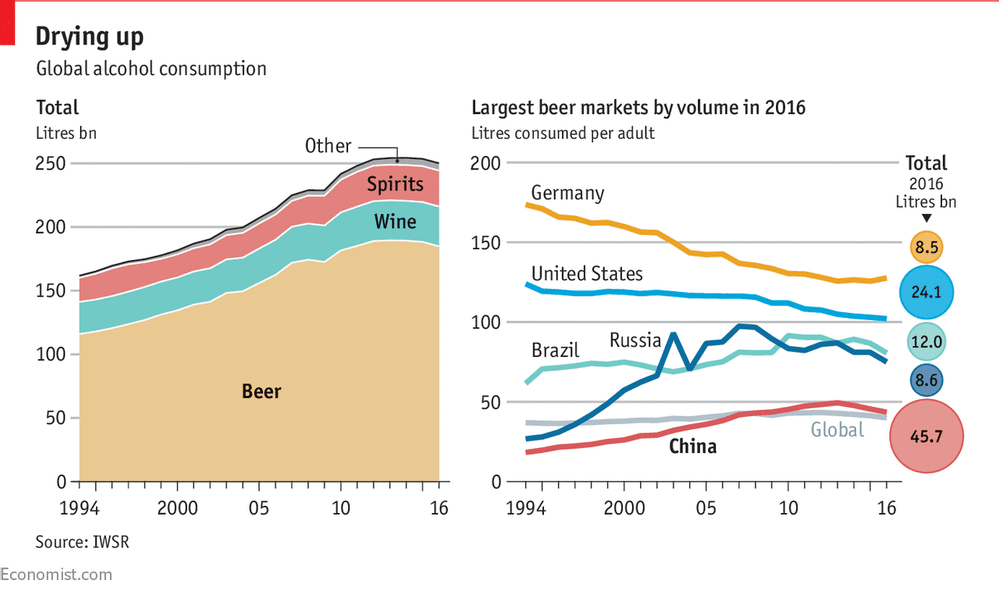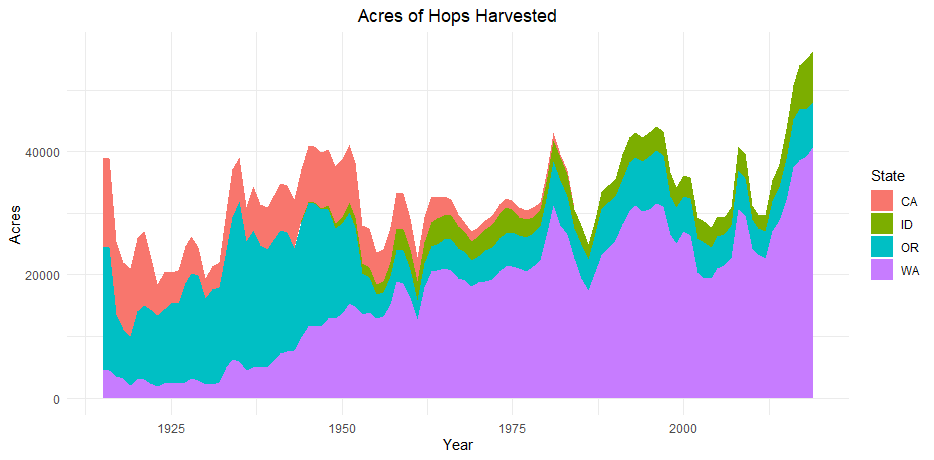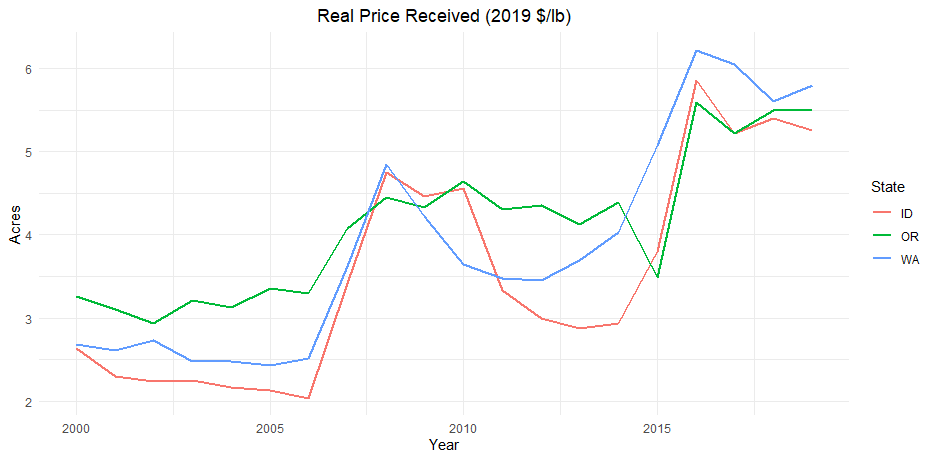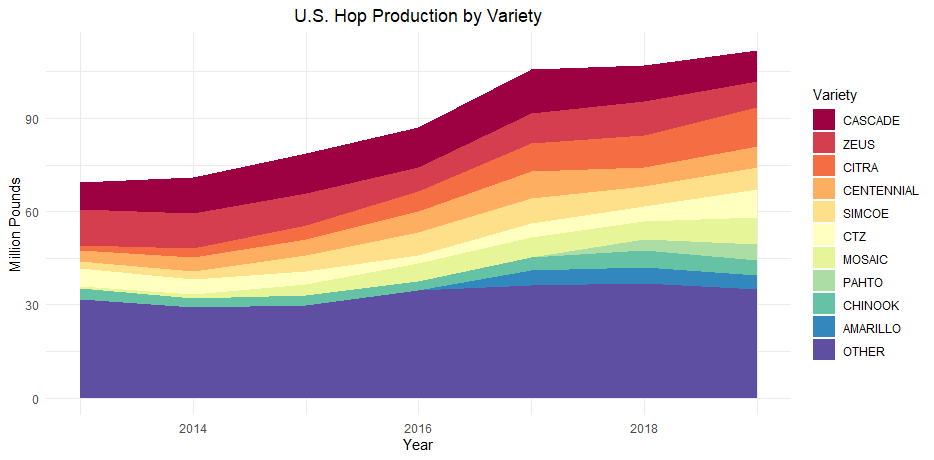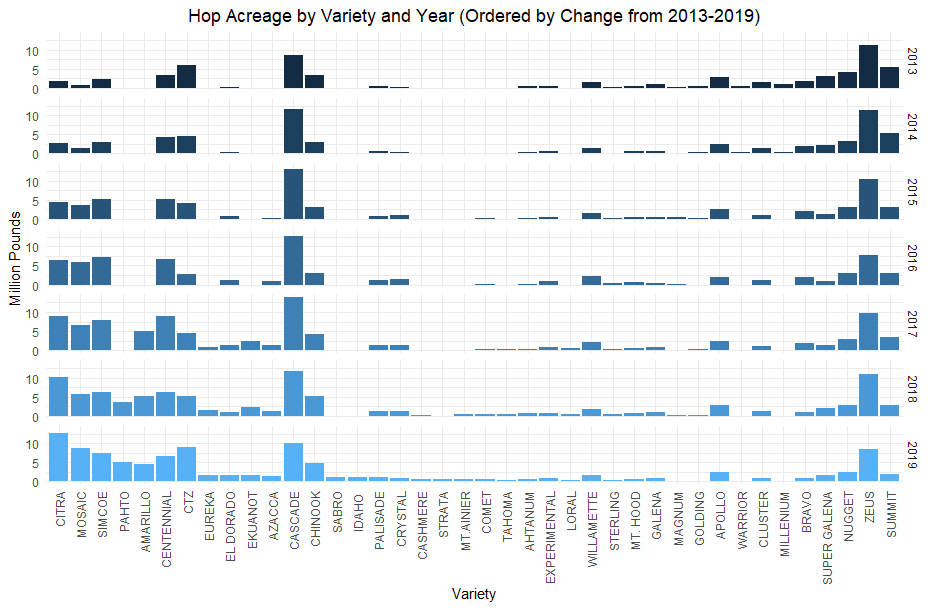1. Today in Ag Data News, why have hops boomed while beer consumption declines? https://asmith.ucdavis.edu/news/hoppiness ">https://asmith.ucdavis.edu/news/hopp...
2. Beer is a simple beverage. It has only four ingredients: malt, water, yeast, and hops. This simplicity belies a recent dramatic change in the relative proportions of these ingredients.
3. An IPA from your favorite craft brewery uses up to 50 times as much hops per pint as America& #39;s leading beer, Bud Light. As craft brewing has grown, hops have become a booming crop even as total beer consumption declines. Link to my favorite brewery: https://www.berryessabrewingco.com/beers ">https://www.berryessabrewingco.com/beers&quo...
4. US beer consumption has dropped by more than 25% in the past 25 years. Beer sales were down 2% in 2019 compared to 2018. The stock prices of Anheuser-Busch InBev and Miller-Coors, which between them supply 2/3 of the US market, are down more than 50% in the past 5 years.
5. This aggregate decline masks substantial growth in craft beer production. In 2019, craft beer comprised 13.6% of the US beer market by volume, up from less than 5% market share in 2010. https://www.brewersassociation.org/statistics-and-data/national-beer-stats/">https://www.brewersassociation.org/statistic...
6. The coronavirus pandemic has reduced on-site consumption at craft breweries. If total craft beer production has also declined, we would expect a reduction in hops use, which would cause inventories to accumulate.
7. NASS reports hop inventories declined by 50m lbs from March to September this year, which suggests 50 million pounds were used to brew beer in those months. This is the same as the March to September inventory decline in 2019. https://www.nass.usda.gov/Statistics_by_State/Regional_Office/Northwest/includes/Publications/Hops/hops0920.pdf">https://www.nass.usda.gov/Statistic...
8. US and Germany produce 80% of the world& #39;s hops. Most US hops are now grown in Yakima Valley, WA. Since 2012, hop acreage in the Yakima Valley has increased by 80% to 41,000 acres. California had significant hop acreage until the mid 1980s.
10. Since 2013, NASS has reported production for 55 different varieties of hops. For no other commodity do they report more than a few varieties. Anyone know the back story?
11. The US produced 112 million pounds of hops in 2019, of which the top 10 varieties made up about 70%. Citra is now the most produced variety, after recently overtaking Zeus and Cascade. New varieties, Pahto and Amarillo, recently entered the top 10.
12. This plot shows the top 40 U.S. hop varieties, ordered by the increase in production from 2013 to 2019. It shows the substantial growth in hops that are popular in craft beers, such as Citra, Mosaic, Simcoe, and Amarillo.
13. Hops were introduced to beer almost a thousand years ago to add bitterness and flavor. They also act as a preservative, which is the property that allegedly led George Hodgson to add large amounts of it to the original IPA for shipment to India in the 18th century.
14. Three centuries later, the humble hop is the leading feature of the most vibrant segment of the beer market. The cool kids may think the hoppy-beer trend is out of hand, but there are few signs of a reduction in demand for hops. https://asmith.ucdavis.edu/news/hoppiness ">https://asmith.ucdavis.edu/news/hopp...
15. We do not have hops in our US major crops app. We created the figures in this article using the same R code that underlies the apps. It grabs data directly from NASS using the Quick Stats API. Here& #39;s the code: http://files.asmith.ucdavis.edu/hops.R ">https://files.asmith.ucdavis.edu/hops.R&qu...

 Read on Twitter
Read on Twitter